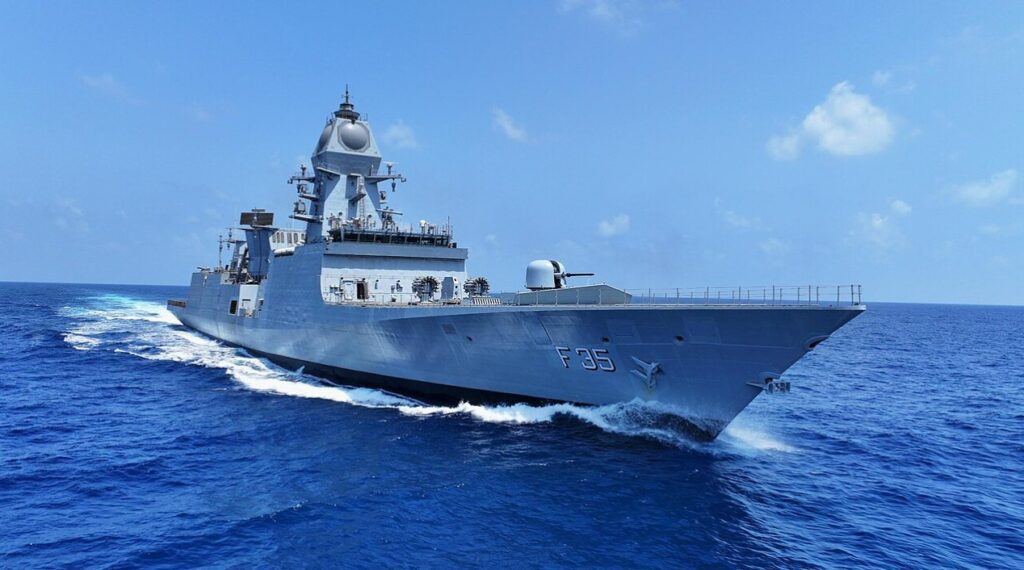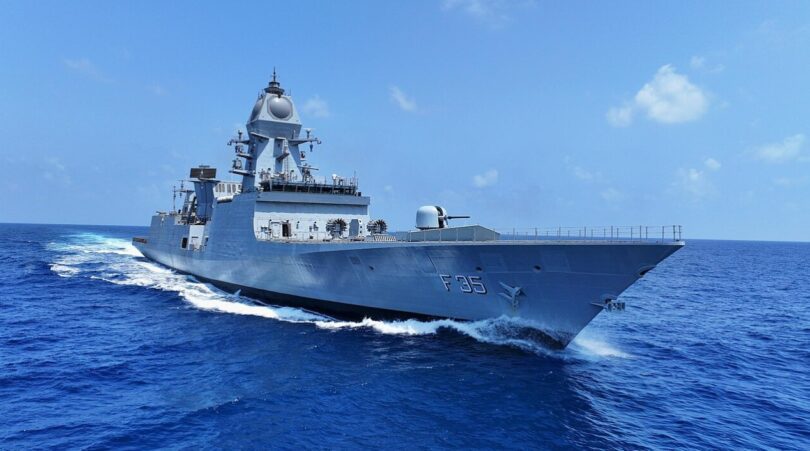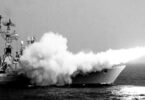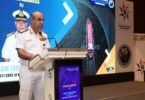The 100th warship produced by India and handed over to the Indian Navy on 01 July 2025 marked a historic occasion for the Warship Design Bureau (WDB), India’s premier warship design organization under Naval Headquarters. Named INS Udaygiri, it was built at Mazagon Dock Shipbuilders Limited (MDSL), Mumbai. Exactly a month later, on 01 August 2025, India’s 101st warship, INS Himgiri, built at Garden Reach Shipbuilders and Engineers, Kolkata, was handed over to the Indian Navy. Both these warships are stealth frigates, i.e. they cannot be easily detected by radar, sonar and infrared sensors and signify India’s growing self-reliance with commendable capability in indigenous warship design and construction.
The WDB hosted a one-day seminar titled Nation Building Through Shipbuilding on 23 July 2025 at the Manekshaw Centre, New Delhi. The seminar, organized to commemorate this major achievement, brought together a wide range of key stakeholders from the Government of India, Indian Navy, shipyards, defence industry, classification societies (which develop technical standards for ships and ensure their compliance), and academia. The platform enabled cohesive and progress-oriented discussions on vital policy issues impacting India’s shipbuilding ecosystem.
Unveiling Indian Navy’s Vision 2047 during his address, Admiral Dinesh Tripathi, Chief of Naval Staff, stressed the importance of invention, innovation, indigenisation and integration of niche and disruptive technologies in achieving the goal of self-reliance. Niche technologies refer to highly specialized innovations designed for unique naval applications, while disruptive technologies are innovations—such as autonomous vessels, artificial intelligence (AI), and advanced materials—that radically change existing military capabilities. Admiral Tripathi also highlighted the delivery of the 100th India made warship as a national achievement and a symbolic milestone in India's journey towards maritime self-reliance, technological excellence, and strategic foresight.

The WDB was instituted in 1964 as the Central Design Office, with the vision of achieving self-sufficiency in warship design. In 1970, it evolved into the Directorate of Naval Design (DND), and over the past six decades, it has played a pivotal role in the design and construction of 20 different classes of warships, ranging from seaward defence boats (used for coastal patrolling and defence) to aircraft carriers, the most complex and strategic naval platforms. The 100th and 101st warships delivered are landmarks that reflect the Bureau’s enduring contribution to India's maritime strength.
Both INS Udaygiri and INS Himgiri, are part of Project 17A instituted for building stealth frigates. Both are of the same specification and design and are follow-on ships to the Shivalik class frigates. Both are state-of-the-art, stealth-guided missile frigates built under Project 17A to operate in "blue water" environments and handle both conventional and non-conventional threats. Incorporating advanced stealth technology, including radar avoidance and reduced thermal and noise signatures, the frigates are equipped with a supersonic surface-to-surface missile systems, medium-range surface-to-air missiles (MRSAM), a 76mm upgraded gun, and close-in weapon systems, making them capable of handling anti-surface, anti-air, and anti-submarine warfare. With an indigenous content of 75%, the project has involved over 200 MSMEs and generated employment for approximately 4,000 personnel directly and more than 10,000 personnel indirectly.
These ships are modern versions of the previous ships with the same names. The older INS Udaygiri was a steam ship decommissioned in 2007 after 31 years of service. The previous INS Himgiri was the second of the Indian-built Leander class frigates which also served the Indian Navy for 31 years before being decommissioned in 2005. Notably, it contributed to Operation (Op) Sahayata, launched in 2001, for rescue and relief after the earthquake in Kutch, Gujarat.
During the recently launched Op Sindoor following the Pakistani terrorists attack on 22 April 2025, at Pahalgam, Jammu & Kashmir, the Indian Navy played a critical role in asserting maritime dominance. Operating as a composite networked force, the Navy deployed its Carrier Battle Group which usually comprises of an aircraft carrier, several destroyers and frigates, cruisers, and support ships.
The very significant success of the Indian Army, Navy and Air Force in very effectively pulverising nine Pakistani terrorist headquarters and severely disabling eleven airfields well inside Pakistan in the first 96 hours of Op Sindoor, was largely due to a major drive of Atmanirbharta (self-reliance) prioritised by the government, part of which is the completion of the 100th and 101st warships. Both the performance by India’s military and the effectiveness of a lot of equipment mostly produced in India in recent years in Op Sindoor surprised many countries and caused severe frustration to POTUS Donald Trump. For Trump it was a double whammy- India’s marksmanship and decision to attack Pakistan without any ‘approval’ from the US.
The author a strategic affairs analyst and former spokesperson, Defence Ministry and Indian Army, can be contacted at wordsword02@gmail.com, https://www.linkedin.com/in/anil-bhat-70b94766/ and @ColAnilBhat8252










